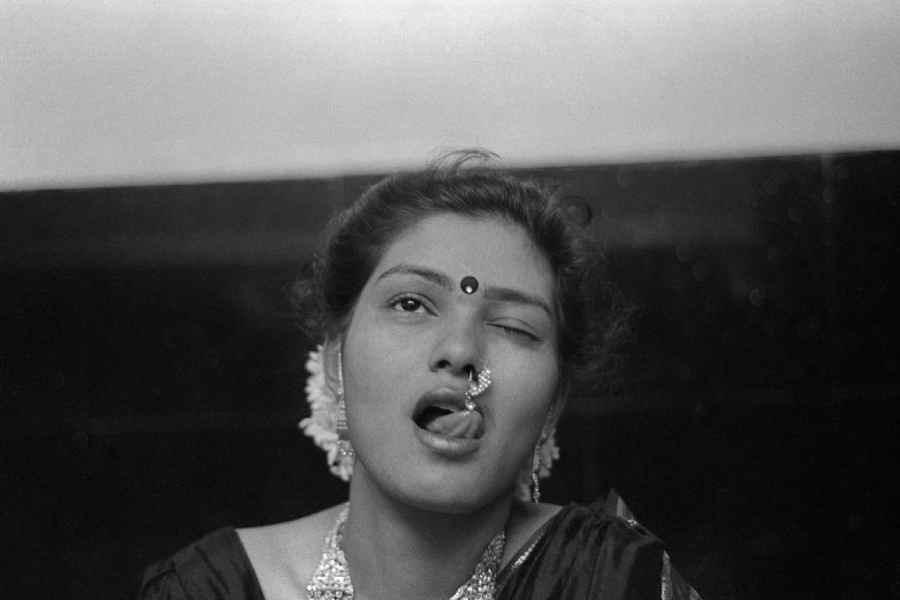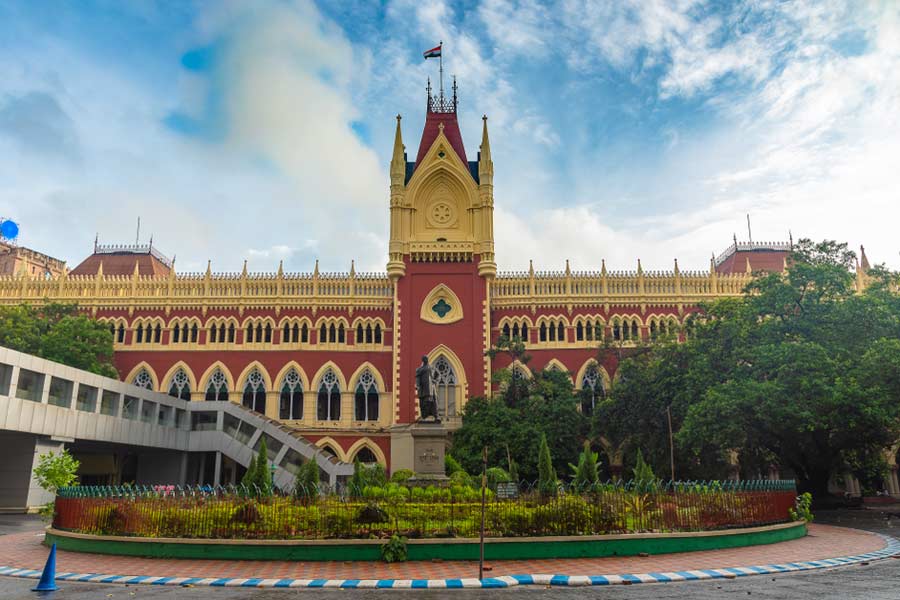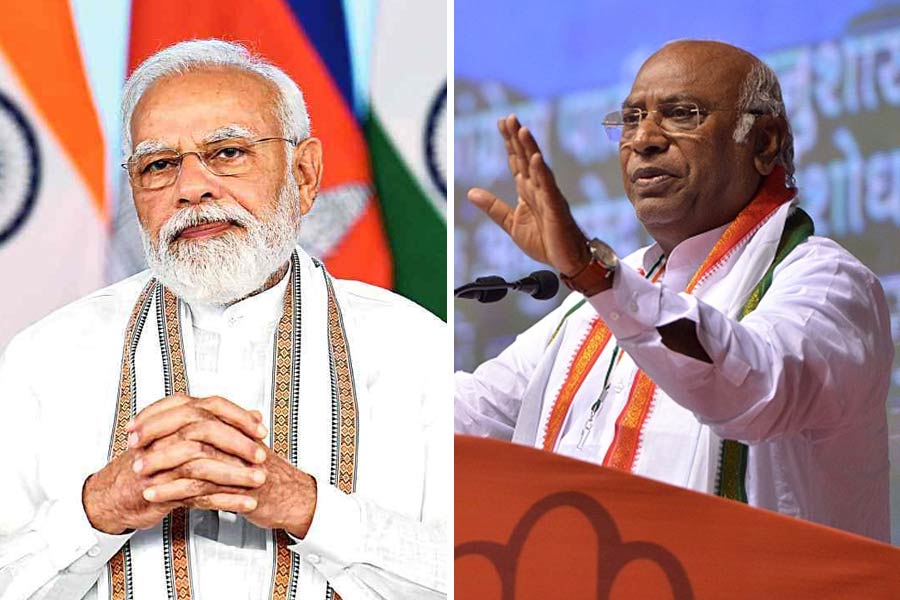Stories of Light and Song: Contemporary Practices in Asia (January 9-February 9), curated by Ina Puri, was part of the 57th annual exhibition of the Birla Academy of Art & Culture. It heralded the power of the photographic image and stood out amidst other exhibits using more trendy media.
The photographs in question (picture) were Sudharak Olwe’s remarkable documentation of the lives of the raunchy Lavani dancers, mostly in stark black-and-white frames, that resisted the temptation of sensationalising them. Neither did the images wallow in pity for these “low caste” downtrodden women. Instead, Olwe’s camera looked directly at the straitened circumstances in which these women lead their lives with their male companions and children, often using giant aluminium trunks as their beds. We view them in the process of getting ready for performances. But it is not for voyeuristic pleasure. The camera lens is merciless and even the pores of their skin are visible in the close-ups in which layers of make-up are clearly discernible. However, once in the spotlight, the dancing girls in full war paint seemed to come into their own, oblivious to their hardships and even the male gaze they inevitably attract. The Lavani dancers certainly do not come across as victims. The photographs reveal the strong friendships that develop among the women and, after a certain age, they become pictures of dignity. Olwe, the photojournalist who is a Padma Shri to boot, is known for his coverage of strong human interest stories that demand both courage and technical skills of a high order.
It is easy to heap adjectives of praise like ‘haunting’ and ‘poetic’ on Ranbir Kaleka’s longish video, how far…?, on displaced people, migrants and refugees. The icy blue cast on the frames was cold and forbidding. The scurry of unidentified feral creatures across the barren plain was chilling. The use of a plaintive Punjabi folk song, too, was appropriate. However, it was perhaps too elegant and technically sophisticated for the subject it dealt with. It did not convey the sense of impending doom that his earlier video on the drowning of the mangroves in the Sunderbans during the floods owing to climate change did so effortlessly.
One wonders why the title of the exhibition referred to “Contemporary Practices in Asia” for the only participant outside India was the Gidree Bawlee Foundation of Arts, a multidisciplinary platform for community-based cultural and artistic explorations based in the Santhal village of Balia in Thakurgaon, Bangladesh. ‘Gidree bawlee’, taken from a Santhali expression meaning the prattle of children, was chosen by the people of the community as the organisation’s name. This should have been explained in the accompanying text itself. Along with artisans of West Bengal, the members of this group were engaged in a collaborative process of bamboo weaving in the Birla Academy lawns. The site-specific installation made Waves in keeping with its title,
for it took into account the local history of bamboo crafts.
Baraan Ijlal, a self-taught artist and archivist based in New Delhi, has an MA in English literature and has experimented with various media. She has been collecting “people’s narratives of loss and desire, oral histories and dreams,” to quote the catalogue. In her Change Room, one could hear anonymous voices narrating their experiences of sex work, for example. It is a hubbub of voices but a listener could relate to them if he or she lent an ear.










